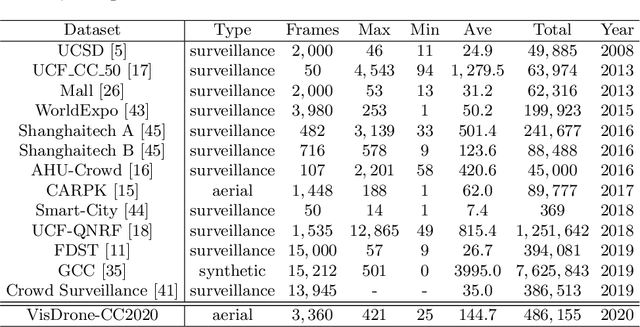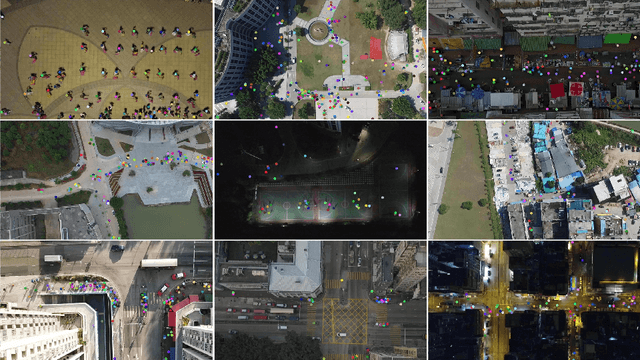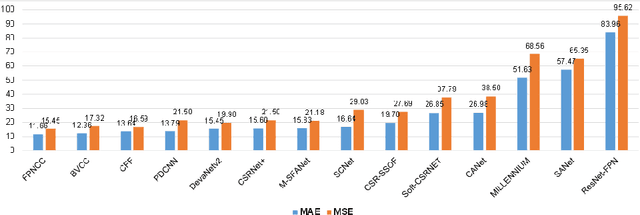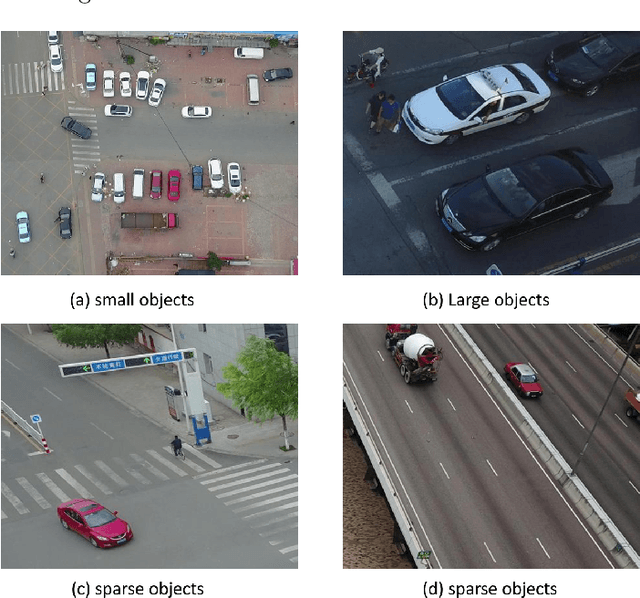Chenzhen Duan
VisDrone-CC2020: The Vision Meets Drone Crowd Counting Challenge Results
Jul 19, 2021



Abstract:Crowd counting on the drone platform is an interesting topic in computer vision, which brings new challenges such as small object inference, background clutter and wide viewpoint. However, there are few algorithms focusing on crowd counting on the drone-captured data due to the lack of comprehensive datasets. To this end, we collect a large-scale dataset and organize the Vision Meets Drone Crowd Counting Challenge (VisDrone-CC2020) in conjunction with the 16th European Conference on Computer Vision (ECCV 2020) to promote the developments in the related fields. The collected dataset is formed by $3,360$ images, including $2,460$ images for training, and $900$ images for testing. Specifically, we manually annotate persons with points in each video frame. There are $14$ algorithms from $15$ institutes submitted to the VisDrone-CC2020 Challenge. We provide a detailed analysis of the evaluation results and conclude the challenge. More information can be found at the website: \url{http://www.aiskyeye.com/}.
* The method description of A7 Mutil-Scale Aware based SFANet (M-SFANet) is updated and missing references are added
AMRNet: Chips Augmentation in Areial Images Object Detection
Sep 15, 2020



Abstract:Detecting object in aerial image is challenging task due to 1) objects are often small and dense relative to images. 2) object scale varies in a large range. 3) object number in different classes is imbalanced. Current solutions almost adopt cropping method: splitting high resolution images into serials subregions (chips) and detecting on them. However, few works notice that some problems including scale variation, object sparsity exist when directly train network with chips. In this work, Three augmentation methods are introduced. Specifically, we propose a scale adaptive module compatable with all existing cropping method. It dynamically adjust cropping size to balance cover proportion between objects and chips, which narrows object scale variation in training and improves performance without bells and whistels; In addtion, we introduce mosaic effective sloving object sparity and background similarity problems in areial dataset; To balance catgory, we present mask resampling in chips providing higher quality training sample; Our model achieves state-of-the-art perfomance on two popular aerial images datasets of VisDrone and UAVDT. Remarkably, All methods can independent apply to detectiors increasing performance steady without the sacrifice of inference efficiency.
 Add to Chrome
Add to Chrome Add to Firefox
Add to Firefox Add to Edge
Add to Edge